In a dramatic climate shift scenario, we imagine Dubai transformed by permanent snowfall - a hypothetical future where changing weather patterns bring Arctic conditions to the Arabian Gulf. Through AI-generated imagery and climate modeling, we explore how iconic landmarks might adapt to this frozen new reality.
Note: This is a speculative scenario based on extreme climate modeling, not a current weather prediction. All images are AI-generated visualizations.
The Science Behind the Scenario
While Dubai's desert climate makes snowfall extremely rare, climate scientists have modeled scenarios where:
Ocean Current Collapse
Disruption of Atlantic meridional overturning circulation could cool the Northern Hemisphere
Jet Stream Shifts
Changing atmospheric patterns might bring Arctic air further south
Precipitation Changes
Increased humidity from a warmer Gulf could lead to winter snowfall
Projected Temperature Shift
Based on extreme climate models from IPCC RCP8.5 scenario variants
Iconic Landmarks Transformed
AI-generated visions of Dubai's most famous locations under permanent snow cover:
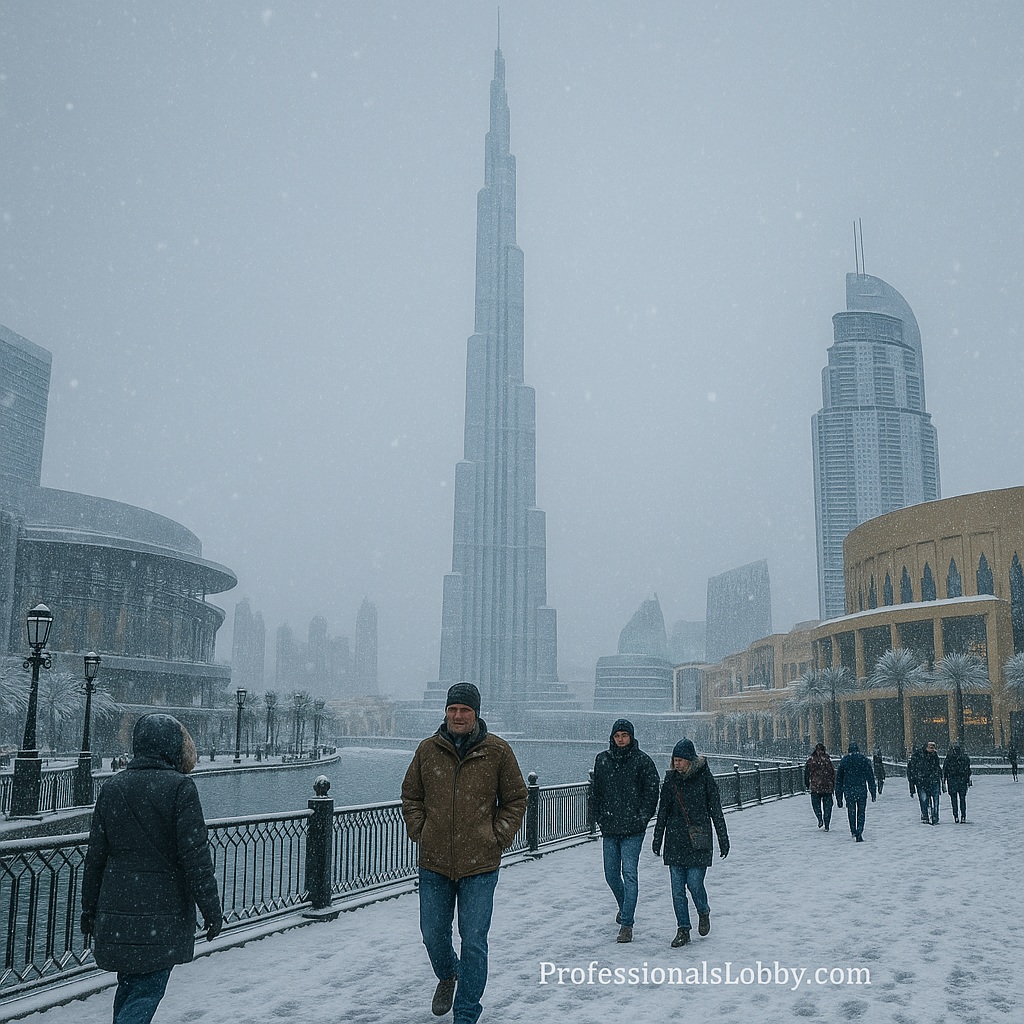
Burj Khalifa
The world's tallest building would require specialized de-icing systems to maintain operations. The observation decks might transform into winter viewing platforms.
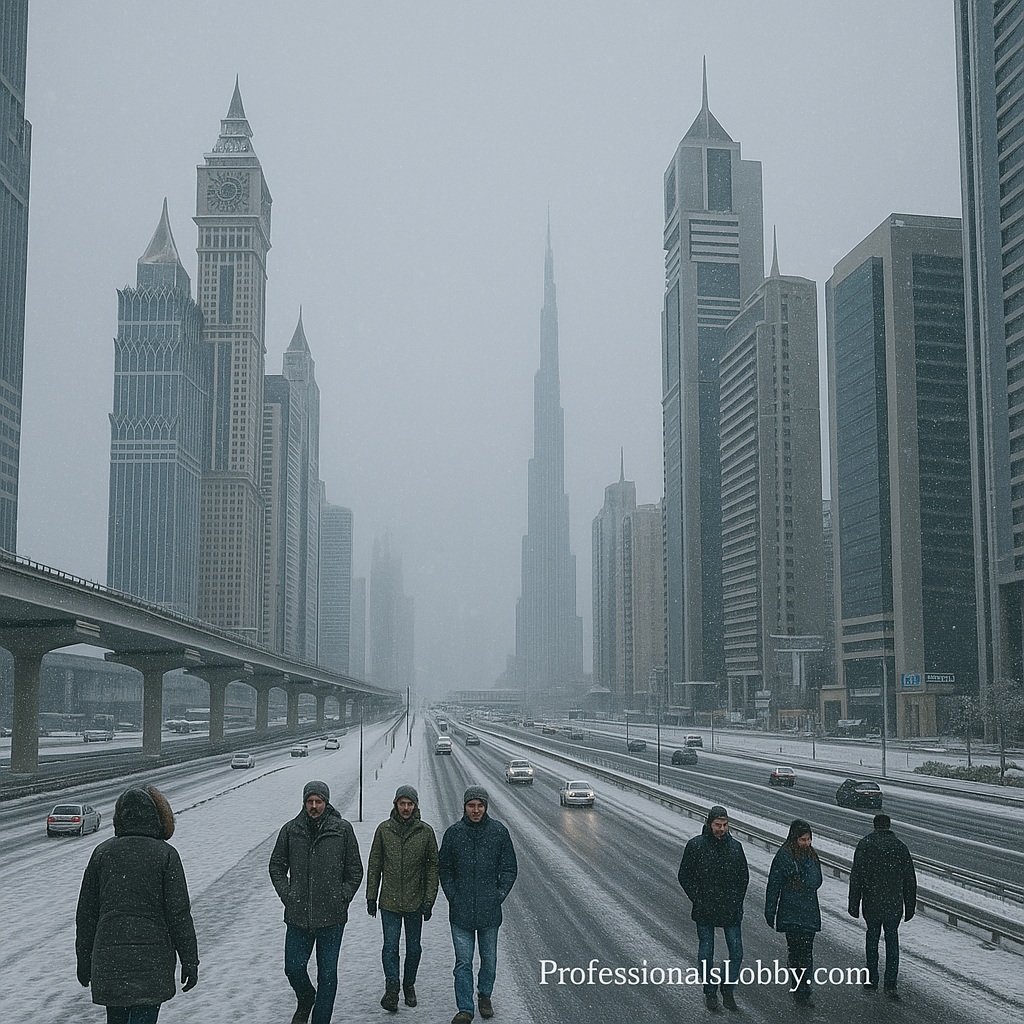
Sheikh Zayed Road
Dubai's main artery would need constant snow removal and anti-icing treatments. Traffic patterns would adapt to winter conditions with heated road technologies.
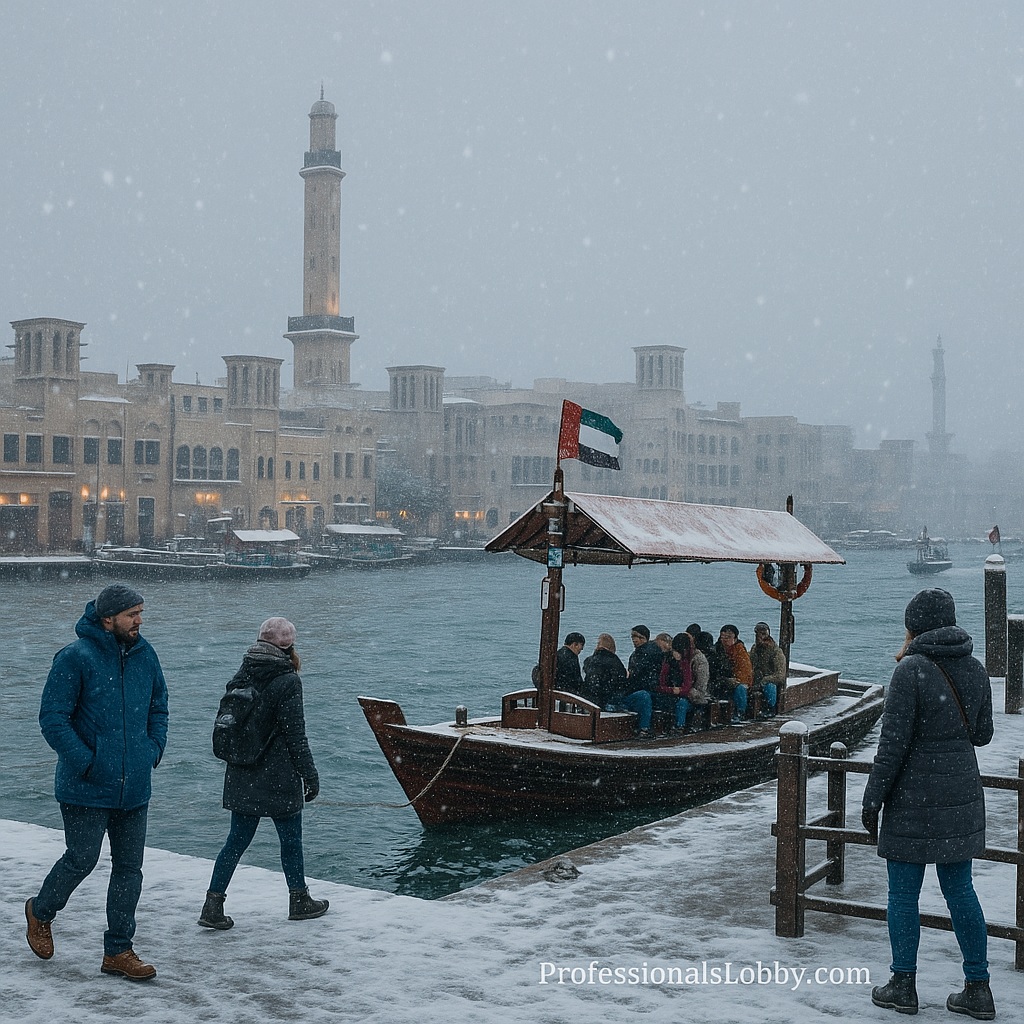
Deira Creek
The historic waterway could freeze over in winter months, requiring icebreakers to maintain navigation while creating new opportunities for winter festivals.
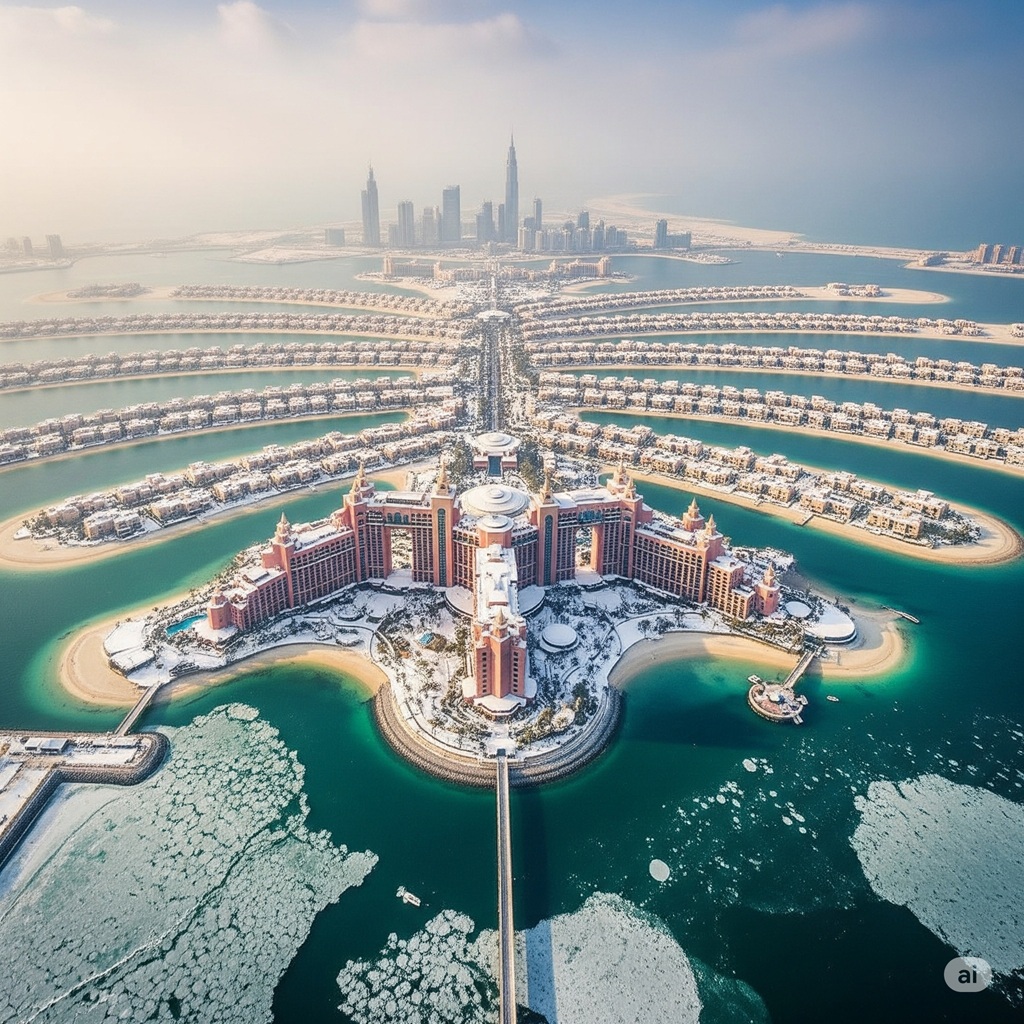
Palm Jumeirah
The artificial archipelago might develop specialized microclimates to protect luxury properties, with heated beach sand and temperature-controlled lagoons.
Urban Adaptation Strategies
How Dubai might transform infrastructure for permanent winter conditions:
| Sector | Challenge | Potential Solution | Cost Estimate |
|---|---|---|---|
| Transportation | Snow accumulation on roads | Heated pavement systems | $12B city-wide |
| Buildings | Freezing pipes, ice dams | Smart insulation upgrades | $8B retrofit |
| Energy | Increased heating demand | Geothermal district heating | $25B infrastructure |
| Tourism | Seasonal fluctuations | Climate-controlled attractions | $5B investment |
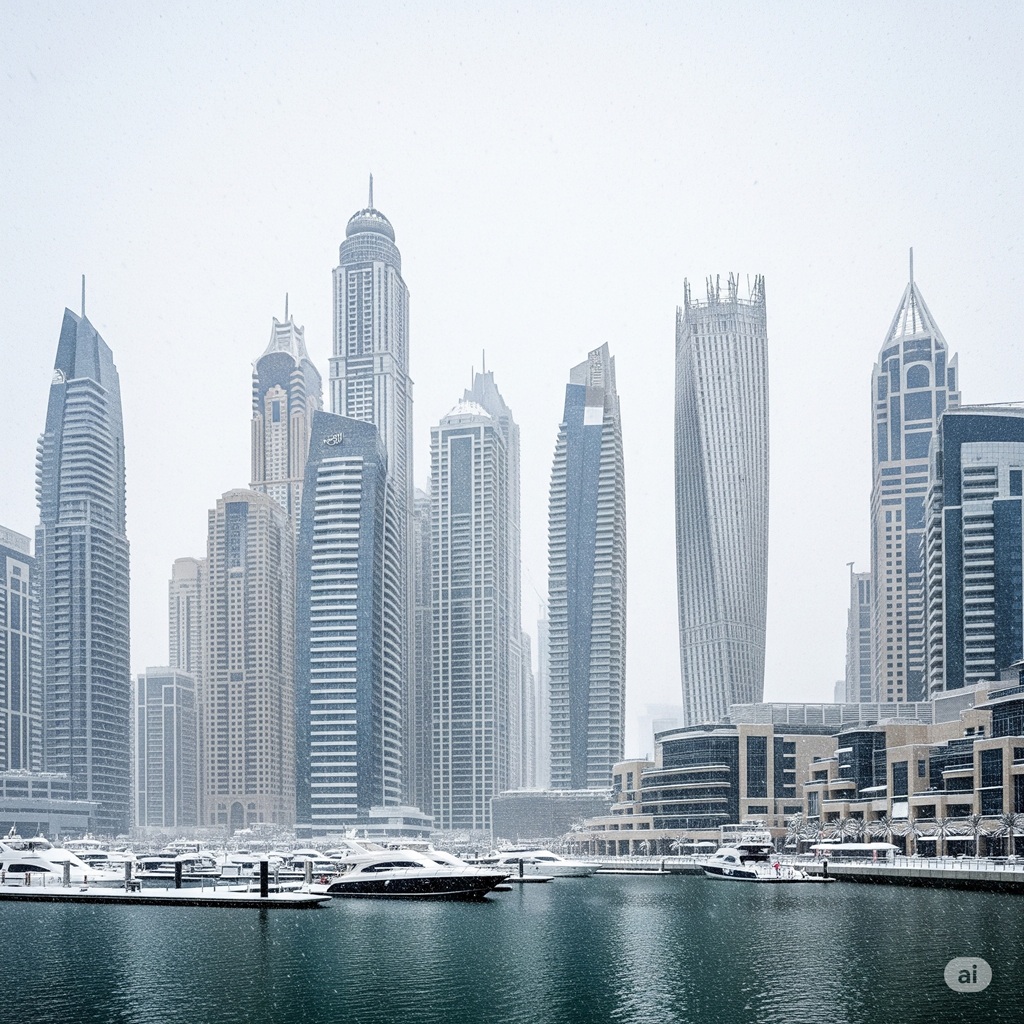
Winter Tourism Innovation
Dubai could leverage its new climate to develop unique winter attractions:
- Indoor/outdoor ski resorts with guaranteed snow
- Ice architecture festivals showcasing temporary designs
- Winter carnivals along the frozen coastline
- Climate research tourism at adaptation sites
Economic Impacts
Potential sector-by-sector effects of permanent winter conditions:
Construction
Tourism
Agriculture
Energy
Note: These projections are speculative estimates based on comparable climate shifts in other regions. Actual impacts would depend on rate of change and adaptation investments.
Comparative Climate Shifts
Historical precedents for dramatic regional climate changes:
Little Ice Age (1300-1850)
Frozen Thames River festivals became common in London
Sahara Greening (African Humid Period)
North Africa transformed from desert to savannah
Potential Timeline for Dubai Winterization
Based on accelerated climate models assuming 4°C global warming by 2100
Reality Check: How Plausible Is This Scenario?
Possible
Climate models show potential for radical regional shifts
Unlikely Soon
Would require specific atmospheric changes
Unpredictable
Tipping points could accelerate changes
Explore Climate Resilience Strategies
Our sustainability consultants help organizations prepare for climate uncertainties with future-proof planning.
Schedule Climate Consultation